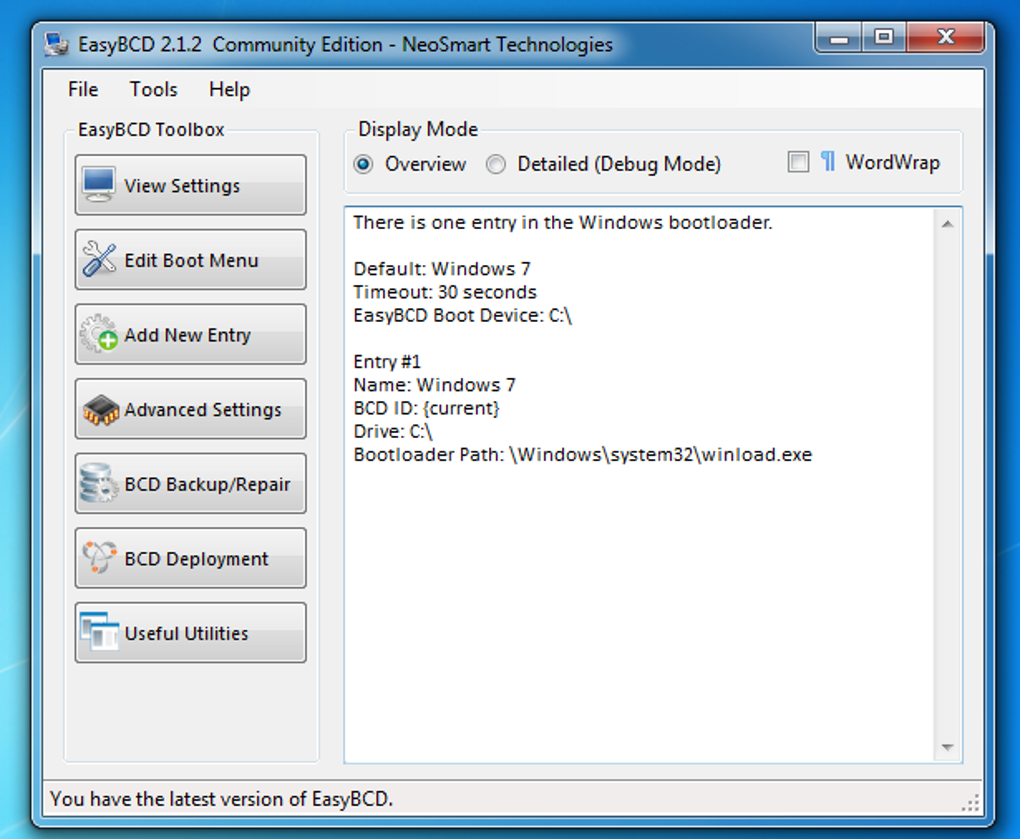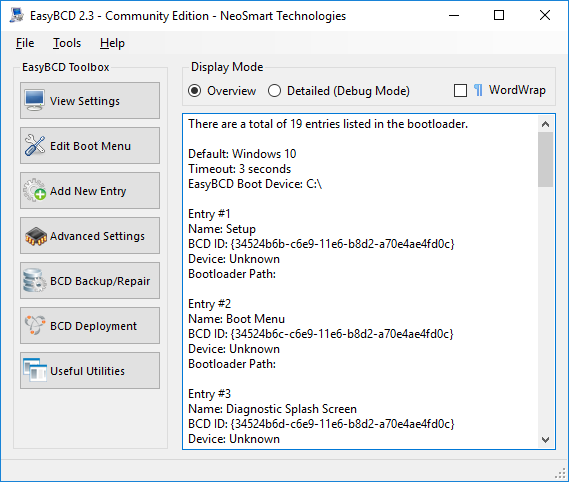

Both tools give access to bcdboot utility using the same form: You can use also Visual BCD Editor or Dual-boot Repair tool to repair Windows BCD. "d:" should map to a primary and active partition (or map to a FAT/32 partition for UEFI firmware) to be bootable! Where "d:" is the target drive to accept boot related files. If no other parameter is given the tool has as target the active partition (or EFI system partition).Ī target partition/drive can be specified as follows: bcdboot c:\windows /s d: On multi boot systems when you repair the system BCD always the root of the latest Windows OS (e.g. Where "c:\windows" specifies the root of Windows Vista, Windows 7 or Windows 8/10. The simplest call to repair BCD is: (drive_letters in examples below should reflect concrete drive mapping on your system!) bcdboot c:\windows The tool supplied with Windows 10/8/7 to assist repair of BCD store is "bcdboot.exe".īcdboot repairs also bootmgr and "\Boot" folder which contains also boot related language files and memtest.exe. The system BCD is a system protected file and can be accessed only with elevated administrative rights (for reading and for writing). load and execution of Windows NT6 loader - file "winload.efi" from "\Windows\System32" folderĪnd here a visualization of Windows UEFI boot process from an UEFI Plugfest - Windows boot environment by Murali Ravirala from Microsoft.(it is not clear what's the purpose of Windows boot manager ("\EFI\Microsoft\Boot\bootmgr.efi") - should be investigated) display of Windows boot menu (skipped if only one boot entry).no master(MBR) and partition boot record(PBR) code used! load and execution of first boot candidate (first entry in NVRAM boot order - usually Windows firmware boot manager(\EFI\Microsoft\Boot\bootmgfw.efi)).UEFI/GPT boot process from hard disk goes like this:
Easybcd uefi full#
If active partition is mapped to c: drive then the full path to system BCD is "c:\Boot\BCD". If BCD resides on an unmapped active partition the full path is "\Device\HarddiskVolumeN\Boot\BCD" where N is a number starting from 1. You can use Disk Management or diskpart.exe to view and set the active partition. The active partition (also a primary partition) can be mapped to a drive letter like c:, d: or be the unmapped "System Reserved" partition.
Easybcd uefi drivers#

(On UEFI/GPT the full path is "\EFI\Microsoft\Boot\BCD")

The full path to this file is "\Boot\BCD".
Easybcd uefi windows 10#
In Windows Vista, Windows 7, Windows 8/8.1 and Windows 10 the System Boot Configuration Data (BCD) is stored in a file in folder "\Boot".
Easybcd uefi how to#
See how to create or obtain a Windows 7/8/10 installation/repair CD/DVD/USB. (use Visual BCD Editor or Dual-boot Repair tool to export/backup BCD or use "bcdedit /export backup-file-name" on elevated command prompt)


 0 kommentar(er)
0 kommentar(er)
